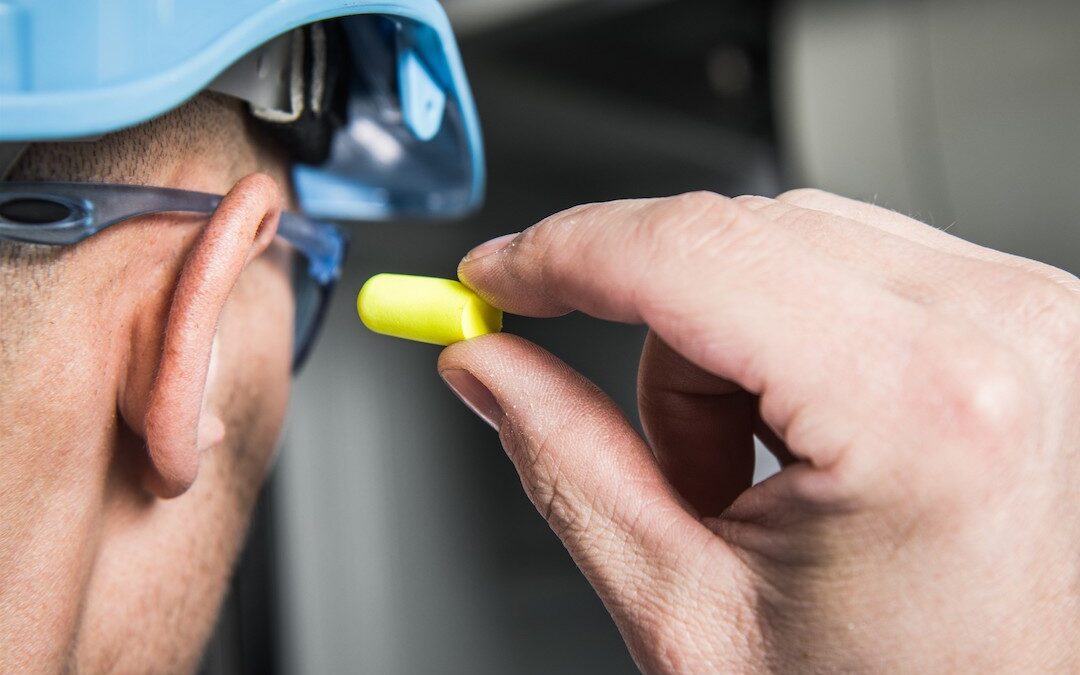Hearing Australia is emphasising the need for all Australians to protect themselves against noise-induced hearing loss.
According to experts, more than 65 percent of farmers between the ages of 17 and 75+ suffer from hearing loss. Additionally, young men with trade qualifications who live in regional and rural areas are even more likely to experience dangerous levels of noise exposure.
Hearing Australia believes everyone should undertake regular hearing checks, and is determined to ensure all Aussie communities are educated on the importance of protecting our ears.

Karen Hirschausen, Hearing Australia Principal Audiologist
The truth about noise damage
Astoundingly, more than 1.1 million Australians will experience hazardous levels of noise in their workplace.
As this month (October) is National Safe Work Month, Hearing Australia is promoting education and prevention around the dangers of hearing loss across all industries.
“This year’s National Safe Work Month theme is ‘For everyone’s safety, work safely’, which reinforces the importance for us as individuals and for Australian workplaces to take a preventative approach to hazardous noise exposure,” says Karen Hirschausen, Hearing Australia Principal Audiologist.
While 98 percent of accepted workers’ compensation claims in 2020-2021 for deafness were linked to prolonged noise exposure, experts believe more education is needed to ensure Aussies are aware of the risks posed by noise damage.
“There’s likely many more workers who have noise-induced hearing loss, but they don’t realise it until it’s too late. On average, it takes 10 years for people to seek help,” says Karen.
“It’s crucial to identify occupational noise-induced hearing loss as soon as possible and then take steps to reduce your noise exposure and prevent it from worsening. Hearing loss can have devastating effects on a person’s wellbeing, contributing to mental health issues. It also has significant financial costs, with one study suggesting the total loss due to occupational noise-induced hearing loss was estimated to reach $29.7 billion.”

Amplifying factors
According to the Making a Noise About Hearing report 2020, which was published by the National Acoustic Laboratories (NAL), individuals in regional and remote areas are more likely to report hearing problems. This is predominantly linked to occupational hazards.
And hearing damage is even more common for farmers and agricultural workers. According to Karen, “compared to the general population, young farmers are around seven times more likely to have hearing loss than the general population of the same age.”
Similarly, this damage is often exacerbated by the relatively long time it takes individuals to seek help. Hearing Australia client Grant, who spent most of his career working in the construction industry, didn’t notice his hearing damage for many years, and hadn’t had his ears checked since high school.
“For some time, I’d been experiencing constant ringing in my ears, which was mainly noticeable at night when in a quiet room watching TV,” Grant says.
“I went to see Hearing Australia for a hearing assessment, and they discovered some hearing loss. I tried some hearing aids and was amazed with the quality, clarity and the hearing improvement I experienced. I’d recommend all tradespeople have their hearing tested regularly.”

Grant Dylko received support for hearing loss when he went for a hearing test.
Top tips
To help lower levels of noise-induced hearing loss, Hearing Australia have put together a list of tips and tricks that all Aussies can follow. They have also released ‘The Prevention Toolkit’, a collection of resources which includes a number of information sheets, posters and infographics to help educate communities on the importance of good hearing.
Hearing Australia’s 10 top tips to protect your hearing on the job:
- Purchase equipment which generates lower levels of noise emissions.
- Always wear appropriate hearing protection such as earmuffs or earplugs – especially in noisy environments.
- Ensure noise reduction aids, such as mufflers, which are used on equipment or tools, are in working order; and report any faults to your manager/employer.
- Limit the time you spend in noisy environments and take regular breaks in quiet spaces.
- Use barriers or screens to block the direct path of sound.
- Use remote controls to operate noisy equipment from a distance.
- Participate in training programs about hearing protection and workplace safety.
- Familiarise yourself with safety guidelines and procedures.
- Report any hearing-related issues or discomfort immediately to your supervisor, safety officer, or HR team.
- Get your hearing checked regularly, and if you notice any changes, see your doctor or an audiologist.
By following these simple guidelines, Aussies can defend themselves against occupational hearing loss, and rest easy knowing their ears are protected.
To read more about the impact of noise on the workplace, check out this article on noise levels in hospitals.

